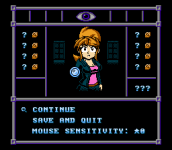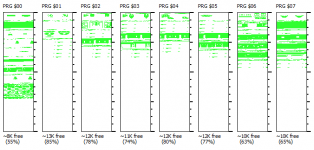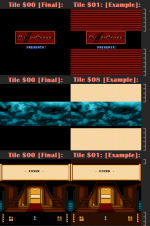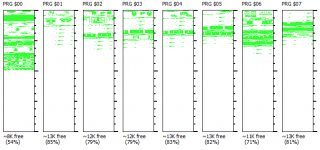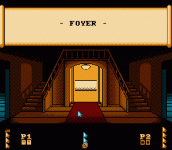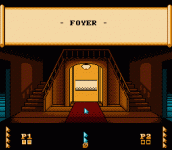CutterCross
Active member
The tileset layout in the UI itself is mostly useless, along with all the default BMP / CHR tilesets the tool exports for backgrounds (and now the GameObject tileset). It's used as a placeholder to keep most of the screens from looking completely unrecognizable, but I use tileset slots 2 and 3 of the exported tileset layout data for setting my HUD tiles, so the result is usually something like this for finished screens:Cool. So what shows in your screens 'Tileset Layout' now? Does it still have the same selectable presets or is that redundant now in your project? Can you still select other layouts within NM ?
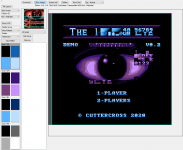
Game compiles and screens load just fine, since tileset slots 0 and 1 of the UI tileset layout window are just there to play nice with the tool, and the actual compressed background tilesets are handled under the hood and through each screens' Screen Info tab. The new secondary GameObject tilesets are also handled this way, but are uncompressed.
From the time I implemented tile compression, I completely reworked the CHR load system so that it's stuck to 1 specific tileset layout for backgrounds. Changing the layout in the UI does nothing. Altering the BMPs the tool uses for main background tilesets also does nothing, as their corresponding CHRs aren't included in the codebase anymore. Same now goes for the original GameObjects tileset.

